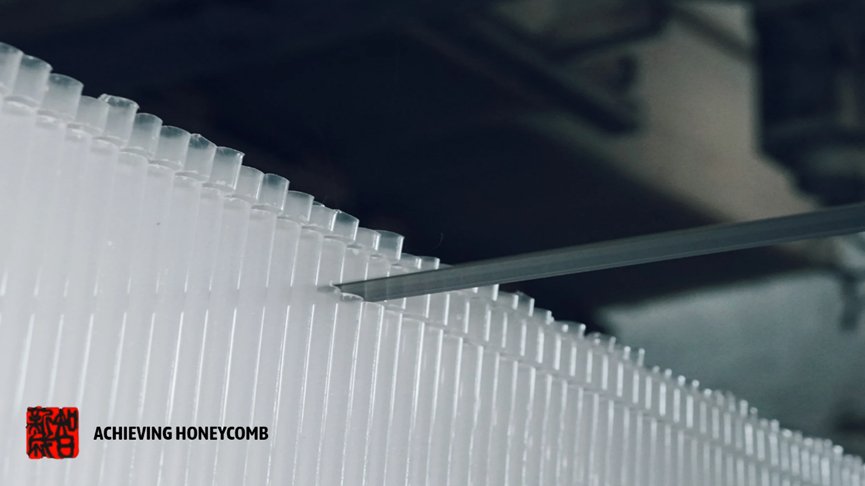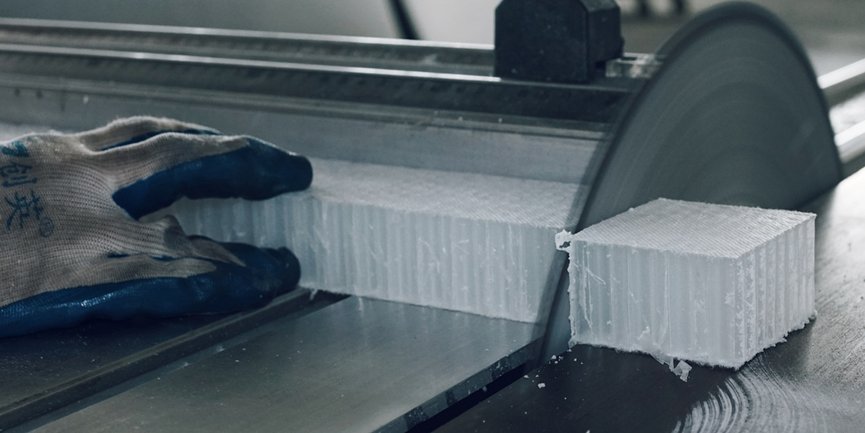Plastic parts are generally produced by direct molding. When custom molding of plastic honeycomb panels is difficult or high precision is required, cutting processing is necessary.
The cutting process of plastic honeycomb panels is different from that of metals. Since the performance of plastics is quite different from that of metals, and there are many types of plastics, the performance of different types of plastics also varies greatly, so the cutting process of plastic parts has its own characteristics.
Effect of PP Honeycomb panel properties on the cutting process

Plastics have a small heat capacity, poor thermal conductivity (their thermal conductivity is only 0.3% or less of that of metals), and a large thermal expansion coefficient (1.5 to 20 times greater than that of metals). Therefore, the heat generated by friction during the cutting process is mainly transferred to the tool. Even if a small amount of heat is transferred to the plastic part, it is difficult to transfer it into the interior of the plastic part, which can easily cause local overheating, causing the plastic part to discolor, melt, or even burn. Moreover, if the temperature is too high, the elastic deformation of the plastic part will increase, affecting the surface quality and dimensional accuracy of the plastic part. In severe cases, it will cause the workpiece to bounce and even cause an accident. Therefore, companies often use coolants (usually compressed air) to reduce the temperature during processing.
When cutting PP polypropylene honeycomb, the tool parameters should be reasonable, the cutting edge should be sharp, and the cutting amount should be appropriate to reduce the cutting force.
Properties of plastic honeycomb cutting

During high-speed cutting, the plastic debris cut off is in a molten state and hardens when cooled. During the processing, the debris is very easy to adhere to the tool, thereby changing the tool angle, increasing the cutting depth, and affecting the processing accuracy of the plastic part. Therefore, it should be removed and cut off in time.
In addition, a large amount of chip dust will be generated during the cutting process of the composite board core material. The company has taken effective ventilation and dust removal measures to ensure that the dust content in the air meets the national standards.
Choice of The tool material
The materials of cutting tools mainly include high-speed steel, carbide, diamond, etc. For cutting plastics, the first two types of cutting tools can be used.
In comparison, high-speed steel has better sharpness. Choosing high-speed steel cutting tools and grinding them carefully can make the cutting edge sharper, but its durability is lower than that of carbide cutting tools.

